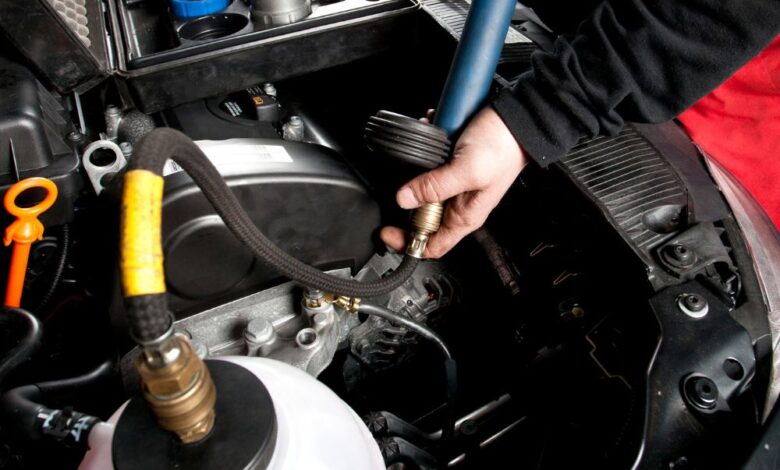Strategies for Maintaining Peak Performance of Your Cooling Systems

Key Takeaways:
– Regular maintenance of cooling systems extends their lifespan and improves efficiency.
– Understanding common problems helps in timely repairs, reducing downtime and costs.
– Optimal performance can be achieved by employing simple, effective maintenance habits.
Importance of Regular Maintenance
Regular maintenance ensures your cooling system runs efficiently and lasts as long as possible. Much like a car requires oil changes and tune-ups, cooling systems need frequent reviews and adjustments to keep them in peak condition. By frequently checking the system’s components—like filters, coils, and fins—you can identify minor issues before they turn into expensive repairs. For instance, a dirty filter can impair airflow, causing the system to work harder and consume more energy. Routine checks can prevent inefficiencies and considerably extend the equipment’s life span.
Common Cooling System Issues
Numerous issues can arise in cooling systems, often when least expected. Refrigerant leaks reduce the system’s cooling capability and increase energy expenses. Blocked or dirty condenser coils force the system to work overtime, shortening its lifespan. Thermostatic malfunctions might result in temperature inconsistencies, which can be frustrating when comfort is essential. Moreover, clogged drainage pipes can lead to water leakage, often resulting in extensive water damage if undetected. When these maintenance tasks seem overwhelming, expert AC repair services can offer valuable assistance and ensure your system is in top shape.
DIY Maintenance Tips
Tackling basic maintenance tasks at home is a proactive way to keep your cooling system running smoothly. Start by scheduling regular filter cleanings or replacements every few months. Filters clogged with dust or other debris can dramatically affect airflow, causing the system to consume more energy to cool your home. Inspect the area around your outdoor unit; ensure it’s clean and free from foliage or obstructions to maintain optimal airflow. Checking your thermostat ensures that it is accurately set and functioning correctly. Over time, a poorly calibrated thermostat can lead to higher energy usage as it calls for more cooling than necessary. While these DIY tasks are beneficial, understanding the limits of these efforts is crucial, and specific tasks require professional assistance. The Department of Energy highlights these problems, emphasizing the importance of routine inspection for early detection, maintaining efficiency, and avoiding high repair costs.
When to Call in Professionals
While DIY maintenance can address many minor issues, there comes a time when professional help is necessary. Persistent issues, like unusual noises or spikes in energy bills that cannot be attributed to identifiable causes, should prompt a service call. Furthermore, professionals should always handle problems involving refrigerants due to their complexity and potentially hazardous chemical exposure. Trained technicians can accurately diagnose these problems, ensuring proper repairs that prevent further damage and maintain efficient system performance.
Latest Technologies in Cooling Systems
Recent technological advancements in the cooling sector have transformed how we experience indoor comfort. Innovations such as smart thermostats allow homeowners to control their systems remotely, optimizing energy usage and ensuring ideal temperature settings. These advanced systems can now learn to use patterns and adjust automatically to save energy while maintaining comfort. According to the Environmental Protection Agency, these emerging technologies improve user experience and significantly enhance energy efficiency, dramatically lowering utility costs.
Environmental Considerations
Environmental awareness has become a crucial aspect of modern cooling systems. The industry is shifting towards using eco-friendly refrigerants to replace older, ozone-depleting formulas. Moreover, newer systems are designed with efficiency in mind, aiming to reduce electricity consumption and, consequently, carbon emissions. Consumers are encouraged to select high-efficiency models bearing energy efficiency ratings that promise less environmental impact. Opting for such models contributes to the home’s eco-friendliness and global efforts towards ecological conservation.
Benefits of Energy Efficiency
The advantages of energy-efficient cooling systems extend beyond cost savings to encompass environmental benefits. By reducing electricity usage, homeowners can lower their utility bills significantly. More efficient systems also lead to reduced greenhouse gas emissions, supporting a more sustainable future. As energy prices fluctuate, investing in modern, efficient cooling systems becomes a financially sound decision. In the long term, these systems help reduce dependency on fossil fuels, contributing to broader environmental sustainability goals.
The Future of Cooling Solutions
As technology progresses, the future of cooling solutions promises even more exciting advancements. With a growing emphasis on integrating innovative technologies, future systems will offer seamless integration with home automation platforms, increasing convenience and control for homeowners. These systems will likely include features that dynamically automate energy savings and enhance comfort levels. As the world shifts towards greener technologies, the cooling industry will continue to innovate, focusing on reducing environmental impact while offering unparalleled efficiency and comfort. This ongoing evolution ensures that tomorrow’s cooling solutions are more effective and aligned with global environmental challenges.




